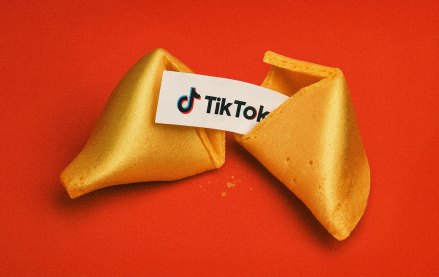Save 50% on a 3-month Digiday+ membership. Ends Dec 5.
Media Buying Briefing: Catalina edges deeper into media territory with new Blockgraph partnership, and others

This Media Buying Briefing covers the latest in agency news and media buying for Digiday+ members and is distributed over email every Monday at 10 a.m. ET. More from the series →
For nearly 40 years, Catalina has gathered data on consumers’ shopping habits, providing its insights to mostly CPG companies and the retailers that sell those CPG products. Along the way, media got way more complicated as more and more media options to reach those shoppers popped up, while the need for deeper insights didn’t improve at a similar rate.
Today, with everything digitally empowered and enabled, Catalina has had a lot of catching up to do. To fast-track its progress, the company in the last few years struck partnership deals with a host of media companies and ad-tech providers to transform itself into an omnichannel provider of data, insights and audiences.
The latest strategic partnership, Digiday has learned, is with Blockgraph, a tech provider that helps to render viewership and IP data from MVPDs into privacy-compliant information that can be paired with Catalina’s deep resource of shopper data, culled from a 110-million household database. Last week, Catalina struck a separate deal with PlaceIQ to bulk up its access to and knowledge of data in the place-based OOH media space. Other deals have been cut in the last year or more with Yahoo!, LiveRamp, SambaTV, iHeart Media, Experian and AdQuick.
The master plan, said Brian Dunphy, senior vp of digital business & strategic partnerships at Catalina., is to offer its expanded services in three distinct ways:
- An omnichannel, cross-platform managed service for advertisers that want Catalina to handle all of their their spend, whether it’s in-store, digital, mobile, desktop, television, CTV and out of home advertising.
- Programmatic services for for agencies that want access to Catalina’s off-the-shelf audiences and provide measurement and attribution services
- Data services for companies that want to build their own audiences along with measurement and attribution but need access to Catalina’s offline data.
“We can provide the service in a managed [fashion] or we can provide a self service option, or we can be the enabler that powers that,” said Dunphy. “And we thought this strategy is really working to help take the data that Catalina has, and turn it into more of a currency for cross-platform activation, and the measurement and attribution and insights that come along with it. You can’t build this entire stack yourself — you really need to have partners to have an ecosystem approach.”
Laura McElhinny, executive vp and chief data officer at Horizon Media, said she chose Catalina as the agency’s main external data provider after meeting with multiple other companies through an RFP process. “What’s valuable is the granularity of their data and the baseline they provide us that gives us the breadth and the depth of our own first-party offerings, along with national representation. We don’t have to rely on cookies anymore.”
The Blockgraph deal catapults Catalina further into connecting its shopper data to TV viewing in a streaming world, given Blockgraph’s deep connections in the MVPD space, which remains the primary means through which people are consuming their TV viewing — linear or streaming, router or set-top box. According to Jason Manningham, CEO of Blockgraph, the partnership is about “the direct application of shopper loyalty data for targeting to the TV supply that [CPG advertisers] want to buy, and to be able to do that on a de-duplicated basis across linear and CTV. That’s huge for CPG advertisers who care a little bit about targeting, but care a lot about reach and frequency.”
The PlaceIQ deal is similar in its aims, only that effort is to penetrate deeper into the world of place-based and out-of-home media, enabling Catalina to map location-based visit signals to its shopper ID graph. PlaceIQ benefits by accessing Catalina’s CPG and retail-focused data and audiences.
McElhinny said she’s noticed the expansion and benefited from it. “It looks like they’re going to continue to grow,” she said.
Color by numbers
It’s no understatement to say the automotive marketplace is about as upside down as it’s ever been, with massive inventory shortages and used cars selling for higher prices than new wheels. Borrell Associates today is releasing its 2022 Local Automotive Advertising Outlook, which predicts local dealer advertising will surge 8.8 percent to $9.4 billion in 2022, after a 15 percent increase in 2021 over 2020.
As would be expected, digital forms of advertising, both online and OTT, are rising much faster than traditional: Borrell forecasts that OTT ad spending by auto dealers will hit $1.9 billion in 2023, more than they spend on paid search, and far exceeding linear TV and radio expenditures.
Beyond that, digital marketing has swollen to be a foundational element of car dealerships — Borrell’s report notes that dealers collectively spent $38 billion on SEO, web maintenance and hosting, social media, online video content, etc., 4.5 times more than spent on advertising.
Takeoff & landing
- Stagwell had a busy week to start 2022, purchasing London-based media agency Goodstuff to add to its Stagwell Media Network for an undisclosed sum, while also buying up the 49 percent of Portland, Ore.-based digital/experiential shop Instrument it didn’t already own.
- VaynerMedia picked up dating/hookup app Tinder’s global media business, the U.S. portion of which had been handled by Crossmedia.
- Digital media firm IAS acquired Paris-based AI firm Context, which specializes in multimedia recognition and classification technology, for $35 million.
- Dentsu International hired Keith Camoosa as chief addressability officer for dentsu Media Americas, a new position at the company. He was most recently global chief data and analytics officer at IPG’s Initiative.
Direct quote
“The decades of one currency to rule over the entire TV ecosystem will officially (and finally) come to an end. The industry has been beholden to legacy measurement and currencies for far too long and has evolved to a point where it requires new, future-proofed approaches that meet the current and future needs of an evolving, converged TV marketplace. In 2022, multiple currencies will be the reality, powered by cross-industry collaboration to find consistent ways to count and ascribe value for all forms of TV. This will simultaneously empower the buy-side to better drive ROI with their ad buys and the sell-side to more accurately prove the value of their content.”
— Calum Smeaton, founder and CEO, TVSquared, in the company’s 2022 TV Outlook report on cross-platform TV
Speed reading
- Stagwell is on the acquisition warpath, buying up lots of agencies (see above in Takeoff & Landing), and the main executor of the strategy is chief investment officer Jason Reid, on whom I focused in this contribution to our Masters of Uncertainty series.
- Senior editor of features and research Max Willens detailed NBC Universal’s unveiling of its first-party data platform, called NBCUnified at CES last week.
- Speaking of research, a story in Variety explained Comscore’s effort to put together its own cross-screen measurement offering to rival Nielsen.
More in Media

TikTok Shop sheds bargain-bin reputation as average prices climb across categories
An analysis by e-commerce intelligence firm Charm shows average prices climbing across more than a dozen key categories.

Ad Tech Briefing: The Programmatic Governance Council is a bid to reset power dynamics
As tensions over TID and GPID peak, Tech Lab is convening a council to hash out commercial ground rules.

Newsweek is building an AI Mode-like experience to customize homepages for readers
Newsweek is building an AI homepage modeled after Google’s AI Mode to increase engagement and offset declining search referrals.





